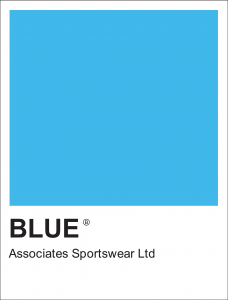
Understanding Brand Language
In today’s fast-paced and highly competitive business landscape, companies and brands are constantly seeking ways to stand out and make a lasting impression on consumers. One crucial aspect of brand identity that often gets overlooked is brand language.
Brand language is a strategic use of words, photography, design and communication to convey a brand’s personality, values, and promise. It serves as a bridge between the company and its target audience, enabling a deeper and more meaningful connection.
The Essence of Brand Language
At its core, brand language is a set of principles and guidelines that dictate how a brand communicates with its audience. It goes beyond merely crafting messages and slogans; it encompasses the choice of words, tone, style, and the overall communication strategy employed by a brand. Brand language is the voice of a brand, and it is a reflection of its unique identity.
The language used by a brand should resonate with its target audience, align with its values, and support its overarching goals. It’s not just about what is said, but how it is said. By using the right words and tone, a brand can differentiate itself in a crowded marketplace and create a lasting, emotional connection with consumers. It’s what transforms a product or service from a commodity into a distinct brand that customers fall in love with.
Why Brand Language Matters
Brand language is essential for several reasons, all of which are intertwined with the success and longevity of a brand:
Consistency: Consistency is crucial in branding. A well-defined brand language ensures that all communication channels, from advertising campaigns to customer service interactions, are in harmony and sing the same song. This consistency builds trust and recognition, making it easier for consumers to identify and relate to the brand.
Differentiation: In a crowded marketplace, standing out is a challenge. Brand language can help a brand distinguish itself by conveying a unique personality and voice. It is a tool for creating a distinct identity that resonates with the target audience.
Emotional Connection: Brand language has the power to evoke emotions. It allows a brand to create a connection that goes beyond the product or service, fostering a sense of loyalty and affinity among consumers. This emotional connection can result in customer loyalty and advocacy. If a brand manages to execute a strong emotional connection, then their customers will probably be for life.
Authenticity: In an age where consumers are increasingly sceptical of marketing messages, authenticity is paramount. A well-crafted brand language communicates sincerity and transparency, which are highly valued by consumers. The world is full of noise and every brand is making it, so making sure your brand noise is authentic should help cut through the blah, blah, blah.
Clarity and Understanding: Effective brand language ensures that a brand’s message is clear and easily understood by the intended audience. This is particularly important in industries with complex products or services or within a crowded arena.
Relevance and Adaptability: A brand’s language should evolve with changing trends and consumer preferences while staying true to its core identity. This adaptability allows a brand to remain relevant and connect with new generations of consumers.
This adaptability need to follow not only the brands target customer needs but also the trends that happen around it. One of the biggest movements within sportswear is sustainability and brands that don’t adapt to this trend and consumer requirement will suffer long term in customer loyalty.
How to develop a Brand Language
Developing a brand language is not a one-size-fits-all process. It requires careful consideration, research, and a deep understanding of the brand’s identity and target audience. Here are the key steps in developing an effective brand language:
Know Your Brand: Start by understanding your brand’s core values, mission, and vision. What sets your brand apart? What do you stand for? This is the foundation upon which your brand language will be built. What’s your UPS. Why do you exist?
Know Your Audience: Identify your target audience and create detailed customer personas. What are their preferences, values, and pain points? Understanding your audience is crucial for tailoring your brand language to resonate with them.
Define Your Brand Voice: Your brand voice should reflect your brand’s personality. Is it playful, serious, professional, or casual? Create guidelines for the tone and style of your communication. Try to think of a celebrity that would be your brands voice. Who would that be and why?
Craft Your Messaging: Develop key messages and core values that encapsulate your brand’s identity. These messages should be simple, memorable, and consistent across all touchpoints.
Consistency Is Key: Ensure that your brand language is consistently applied across all communication channels, from your website and social media to customer service interactions. This consistency builds trust and recognition.
Feedback and Iteration: Brand language is not static. It should evolve and adapt to changing circumstances and feedback from your audience. Regularly evaluate the effectiveness of your language and make adjustments as necessary.
The Impact of Brand Language
A well-executed brand language can have a profound impact on a brand’s success:
Brand Loyalty: Consumers are more likely to develop a sense of loyalty to a brand that speaks to them in a way that resonates with their values and preferences.
Brand Recognition: A consistent brand language helps in creating instant recognition. When consumers hear or see certain words, graphics or phrases, they immediately associate them with your brand. “Just Do It’ is known by billions around the world and apple computers and phones are instantly recognisable without looking at the logo.
Market Leadership: A strong brand language can position a brand as a leader in its industry, setting the tone for competitors to follow.
Customer Trust: Authentic and clear communication fosters trust. When consumers trust a brand, they are more likely to make purchasing decisions in its favour. Patagonia the outdoor brand is famous for this. Their customers believe Patagonia are 100% focussed on being as sustainable and climate friendly as possible and that’s why they buy more and more from them.
Customer Engagement: An engaging brand language keeps customers interested and involved. It can spark conversations and interactions, which are vital in the age of social media.
Competitive Advantage: A unique and compelling brand language can give a brand a significant edge in a competitive market, making it the preferred choice of consumers.
In conclusion, brand language is more than just words or a slogan; it’s a strategic tool that can shape a brand’s identity, connect with consumers on a deep level, and drive success in the marketplace.
Developing an effective brand language requires careful thought, understanding of the brand’s identity and target audience, and ongoing refinement. When executed well, brand language has the power to set a brand apart, build trust and loyalty, and leave a lasting impression in the hearts and minds of consumers.
If you would like to learn more or work with us to create your brand language then please get in touch.




